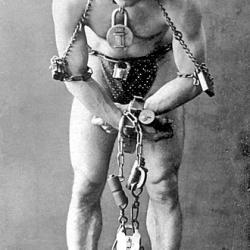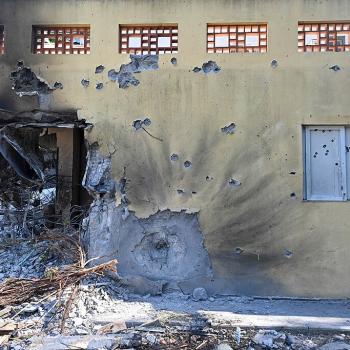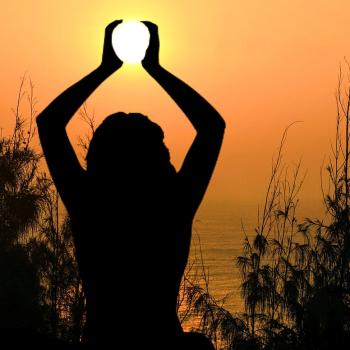On the Shabbat of Sukkot and of Passover, the same passage is read from Exodus where Moses asks to see God's face and God refuses.
"Show me now your Glory . . ."
"You will not be able to see My face. For no human can see my face and live . . . Behold! there is place near me; you may stand on the rock. When my glory passes by, I shall place you in a cleft of the rock; I shall shield you with my hand until I have passed. Then I shall remove My hand and you will see My back, but My face may not be seen" (Ex. 33:18-24).
God's gentleness permeates this passage. God shields Moses with his hand in a cleft of a rock, shielding God-self from the human gaze.
The power of a gaze to objectify has long been a topic of feminist theory. According to the theory of the male gaze, broadly speaking, our culture's vantage point is that of men, because men are given the power to do all the looking. As a result, women are largely understood as men see them (even by other women) and not as they see themselves. Finally, even the woman starts seeing herself through the lens of the male gaze, where she is primarily the object of his desire.
Here, Moses attempts to make God the object of his gaze, and his desire. Even though the tradition spends a good deal of time explaining how God, being an immaterial being, has no face and thus Moses is not trying to see God's physical being, but the "complete and unadulterated perception of God," this point is largely irrelevant (ArtScroll Stone Edition Torah). Whether the God-self is corporeal or purely existential, Moses demands that God expose God-self to him . . . "Show me now your Glory."
Meanwhile, God turns away from Moses. God, like the self-protecting object of the male gaze, refuses to divulge God's entire self, by limiting Moses' vantage point to God's back. According to Maimonides, "God's back" is natural law. The language of the passage, however, presumes that it is something more intimate, more incredible. So much so that Moses must be sheltered in God's hands before he is permitted to see.
This intimacy speaks of the paradox of visibility, of a God who wishes to be seen, known, and understood, and yet a God who hides from the intrusion of the relentless human gaze. To be known so intimately limits the object of the gaze to being that which we see. The back as compared to the face is ageless. In allowing Moses to see God's back, God is displaying the static parts. The unchanging God, you can see; but my face I will hide from you. I will not show you my limitless Glory.
Even as God rejects Moses' desire for full disclosure, God extends an invitation. "Appear before the Sovereign Lord, the God of Israel" three times year for the festivals: on Rosh Hashanah (New Year), Sukkot (Feast of the Tabernacles), and Passover (Ex. 34:23). In the text, this requirement is limited to men and is directly referring to festival pilgrimage to the Tent of Meeting, wherever it stood. Nevertheless, the juxtaposition of God's refusal to be seen in one instance and God's specific request for us to "appear" before God in the other instance, further illuminates the problem of the human gaze.
Where the demand for absolute disclosure is rejected, an invitation to dwell together is extended. This invitation particularly resonates during the holiday of Sukkot, where we are commanded to build a Sukkah and to simply dwell in it—to be fully, physically present in its space. In the Sukkah the problem of the human gaze is resolved through the mutuality of simple presence, where together we can exist, demanding nothing from the other. On Sukkot, we are commanded to just be.
10/9/2011 4:00:00 AM





